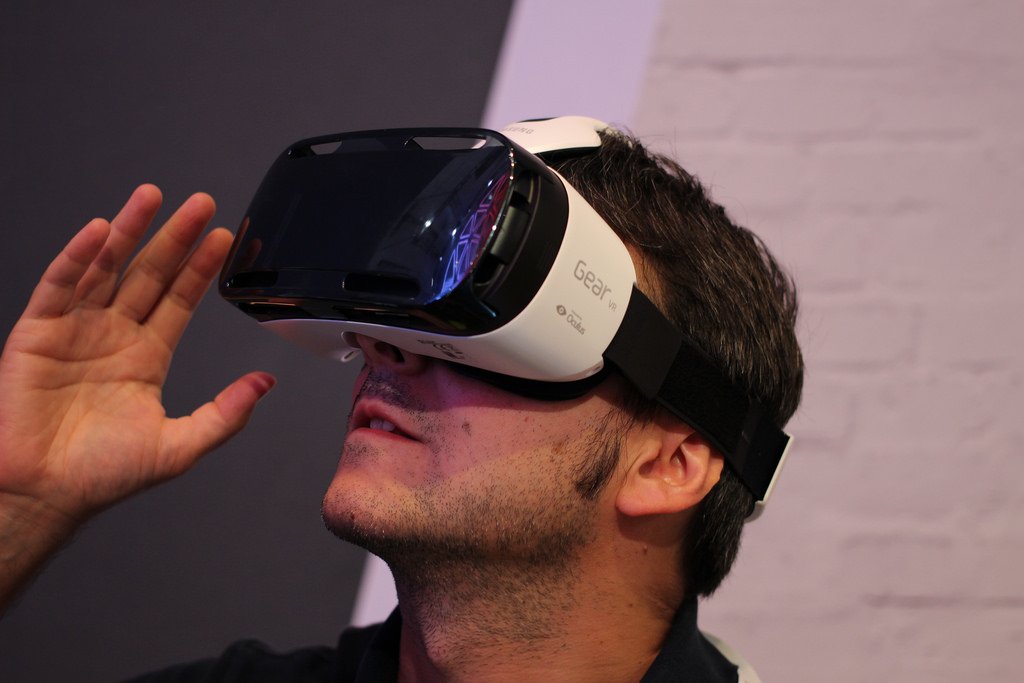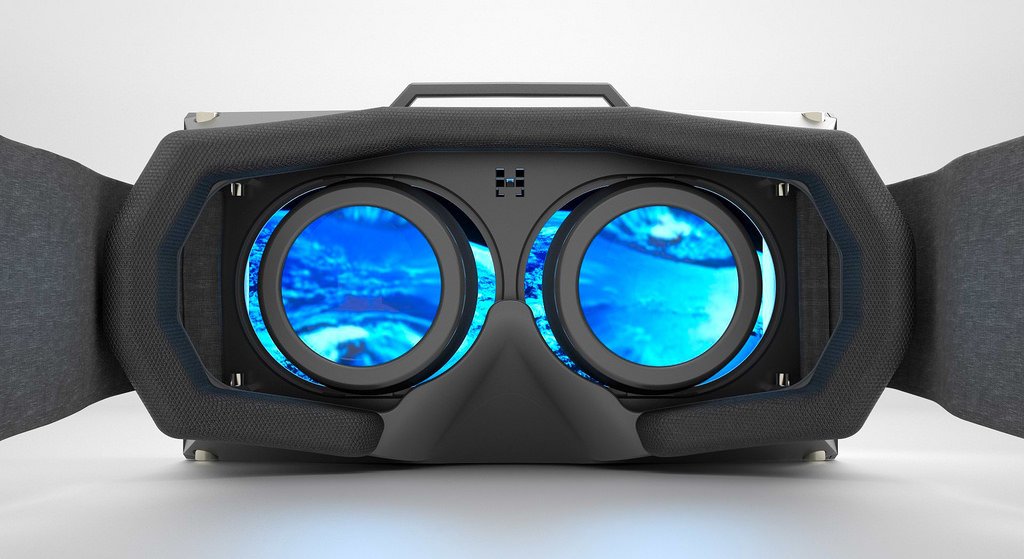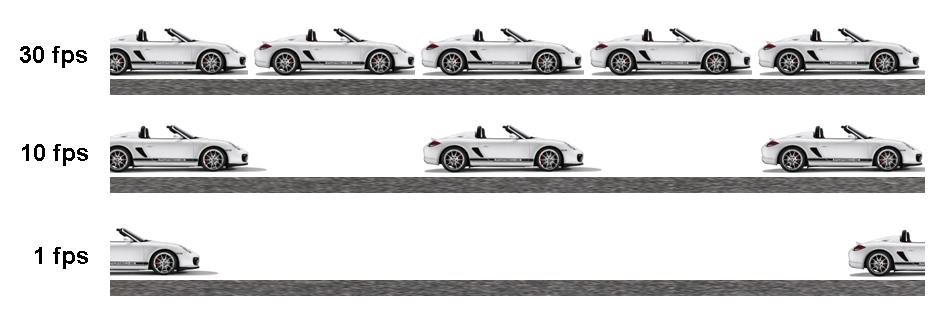Virtual reality, or VR for short, is an incredible experience which I recommend to people who have not yet tried it. It allows you to tap into another reality even though you know what’s going on is not real. Depending on the VR experience, the user can lose control and fall over because of what they’re seeing, showing you just how realistic they are. There’s countless videos of this online, but how do they work?

Virtual Reality (VR)
VR tricks your brain into thinking what you experience is real. It does this in a few ways which I will explain, but first we must understand how the glass lenses which you look into work.
VR Lenses
The reason why we see objects, is because light travels from that object to our eyes. When this light enters our eyes, it is focussed onto the back of the eyeball where an image is formed. The more focussed the light beams are; the better the object looks to us.
When objects are too close the light beams cannot focus properly so they appear blurred. Try putting something directly in front of your eye; it will appear blurry. When VR goggles are put on, the screen is very close to the eyes - so how is VR possible?
This is where the lenses come into play. These lenses are designed to take the light from the screen and refract it so that when it hits the eye it tricks your brain into the thinking the object is further away than it actually is [1]. Impressive, right?

Figure 1: Image showing the lens inside VR goggles
Stereoscopic Display
A stereoscopic display is a display which gives a 3D effect [2]. The technical term is depth perception which is vital to be able to trick the brain. Our eyes allow us to see depth – but how? Look at something… anything. Now close your right eye, and remember the image you see. Repeat this with your left eye. You should notice that both the images are at a slightly different angle and do not look the same.
A stereoscopic display gives the illusion of 3D, from a flat image. In terms of VR, the display is split into two images which are at slightly different angles to mimic the way your eyes work. This tricks your brain into thinking you are in a reality that you are not actually in depending on the experience played on the screen!

Figure 2: Image showing a stereoscopic display – please note the slightly different angles in the images to create the illusion of depth
Field of View (FOV)
Field of view is the extent of what you can see at any given time [3]. In other words, if anything moves in your FOV you will see it. Any movement outside your FOV and you cannot. If you looked straight, your eye has an FOV of about 180 degrees - with eye movement, about 270 degrees.
Getting this right with the VR is important, otherwise it may cause motion sickness. This is because you are in a new fake reality, and if it isn’t similar to the attributes of your real reality – then your brain gets confused thus upsetting your stomach.

Figure 3: Image showing the FOV of a camera which describes what it is very well
Frame rate (FPS)
Any digital form of a moving image has an FPS, which is short for frames per second. Frame rate is how many images (frames) are played per second. A 60 FPS game for example is a game that has a series of 60 images every second to produce movement [4].
The video or game in a VR experience must be at the correct FPS, else again, may cause motion sickness. Anything below 60 FPS is enough for the brain to be too confused as your new reality would be too choppy.

Figure 4: FPS explained in a diagram
Having perfected all these points, you have enough to trick the brain with one of the five senses; vision. Of course, you would like it to be as close to reality as possible, right? Headphones and special devices you can hold are usually provided to simulate more of your other senses. In fact, some VR experiences may use your sense of smell to make it even closer to a new reality!
If you ever get the chance to experience VR, I strongly recommend you take up the offer!
If you have any questions, leave them below and until next time, take care.
~ Mystifact
References:
[1] - https://vr-lens-lab.com/lenses-for-virtual-reality-headsets/
[2] - http://whatis.techtarget.com/definition
[3] - http://www.androidauthority.com/virtual-reality-work-702049/
[4] - http://aframe.com/blog/2013/07/a-beginners-guide-to-frame-rates/
Please note; no copyright infringement is intended. All images used have been labelled for re-use on Google Images. If any artist or designer has any issues with any of the content used in this article, please don’t hesitate to contact me to correct the issue.
Relevant articles:
What Makes a Rainbow?
SSDs vs Hard Drives – The Comparison
Why does the road look like it's WET on a hot day? The Physics behind a Mirage
Previous articles:
The Dark Side of Nature #1 - How are Scary Sinkholes formed?
Why Can We See Through Glass?
How Do We Hear Sound?
Follow me on: Facebook, Twitter and Instagram, and be sure to subscribe to my website!
